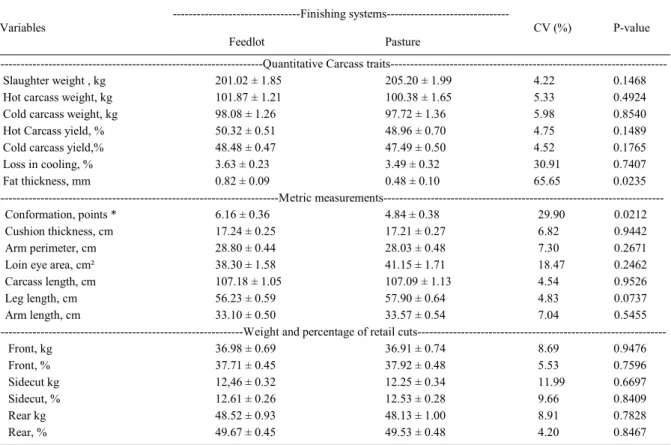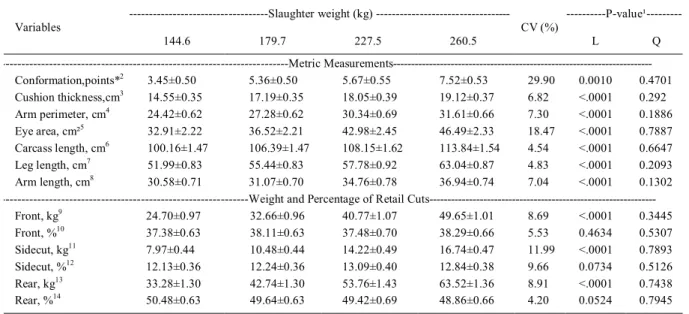Quantitative carcass traits of Holstein calves, finished in different systems and slaughter weights
Texto
Imagem



Documentos relacionados
The objective of this study was to evaluate the carcass characteristics (carcass weight, carcass yield, fat thickness, loin area, marbling and colour) and chemical composition of
The effects of gender and slaughter weight on the growth performance, carcass traits, and meat quality characteristics of heavy pigs.. The effects of sex and salughter
With the exception of certain parameters such as cold carcass weight, marbling score and quality grade, the effects of bentonite additives on yield traits and quality traits
Donkeys with live weight at slaughter >126kg, have greater carcass weights and dressing, and lower cooling loss than lighter donkeys.. In addition, the non-carcass components
Non-castrated steers showed greater daily weight gain, feed efficiency, slaughter and hot carcass weights, and loin eye area, besides lower fat thickness than surgically-castrated
Higher slaughter weight and carcass weight and yield were obtained in the birds previously fed to medium dietary Lys level ( p< 0.05), and the MW variety showed overall better
The level of 0.5% clinoptilolite, in growing and finishing pigs diets did not affect feed intake, daily weight gain, feed conversion, carcass quality, hot carcass weight,
This means that the formation of niobium oxyhydroxide instead of niobium oxide permits the generation of the peroxo- species (oxidizing agent) while also facilitating the anchoring